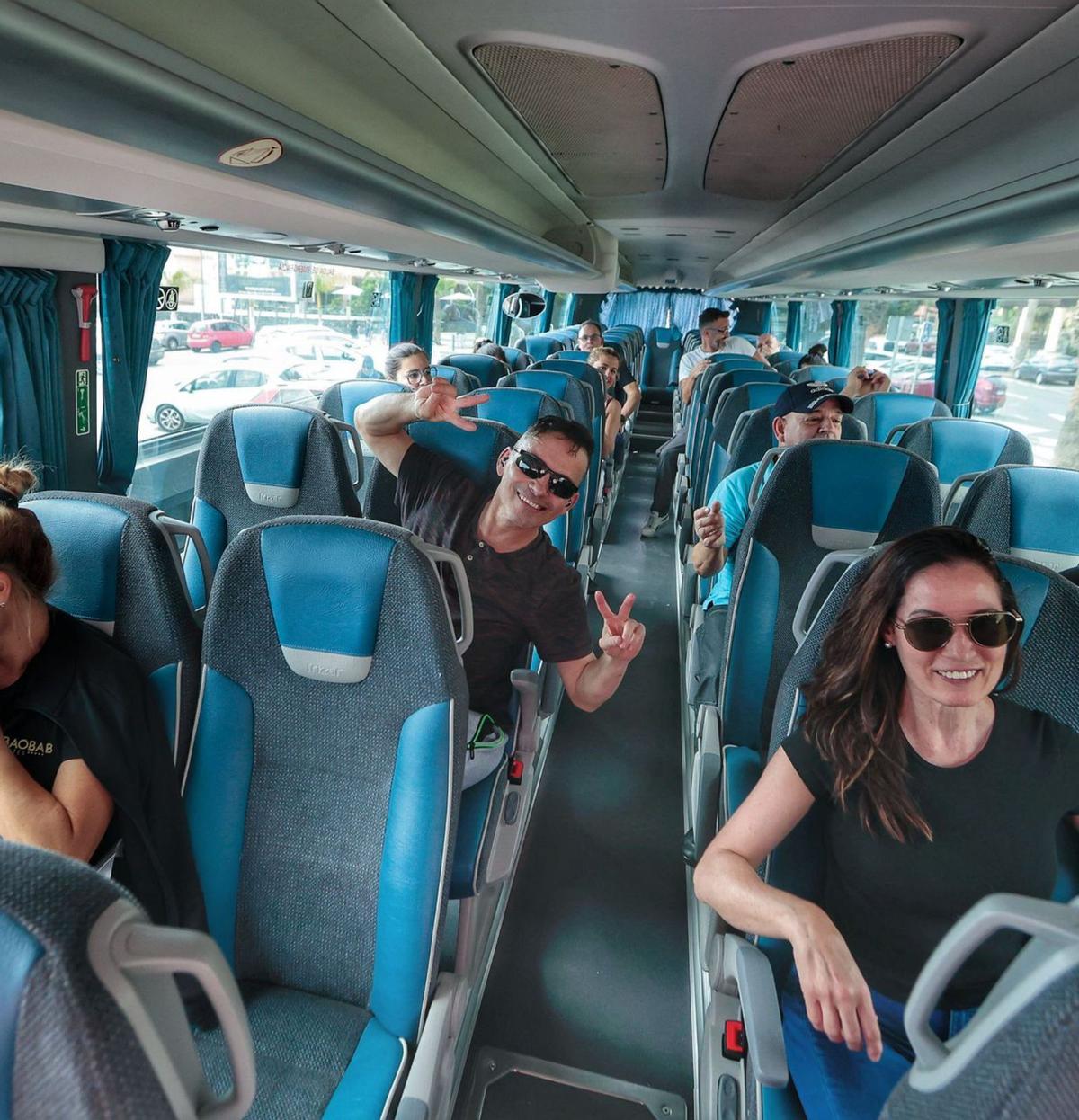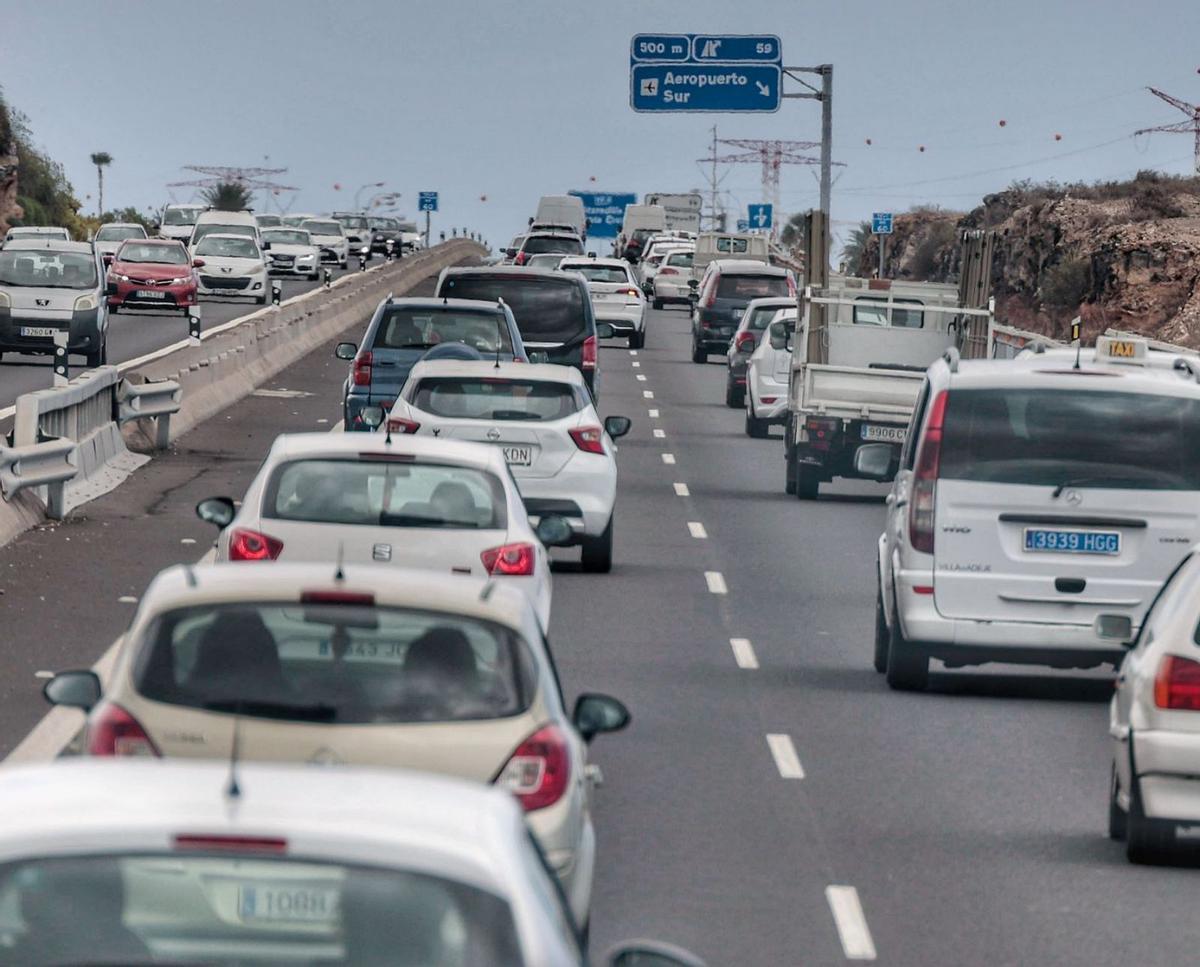For a large part of the hotel staff in Costa Adeje, getting to their jobs is quite an odyssey. Their day can start as early as five in the morning just to arrive on time. Getting ready, taking the bus, and waiting in long lines of traffic in the discomfort of crowded buses. This is the morning routine for many. For those who have a car, there are also consequences: road congestion, fuel expenses, and the fatigue of driving before and after a workday.
The Hotel and Extrahotel Association of Tenerife, La Palma, La Gomera and El Hierro (Ashotel) is carrying out a pilot mobility project under trial since 6th May. It has been developed under the name Ashotel Shared Mobility, a bus system operating seven days a week for the staff of nine hotels in the area: Parque del Sol, Iberostar Anthelia, Jardines de Nivaria, GF Gran Costa Adeje, GF Isabel, GF Fañabé, GF Victoria, Gran Tacande Wellness & Relax, and Baobab Suites. It consists of a private bus service that complements the public transport provided by Titsa. There are three routes between the residential areas of San Isidro, Cabo Blanco, and Las Galletas/El Fraile to Costa Adeje and vice versa.
The duration of the journeys is between 15 and 50 minutes. There are only three stops on each route with the goal of making the route as efficient as possible and as close to the workers’ homes as achievable. Ensuring a punctual, comfortable, and timely arrival at work are some of the main objectives. The buses have a capacity of between 15 and 55 seats, depending on the demand for each journey. Currently, it is estimated that around 200 users are using this project. It will be on a trial period until 2nd June.

Hotel staff on the bus. / María Pisaca
Ania Ramirez is a room attendant at the Gran Tacande Wellness & Relax hotel, for seven months. Her day used to start at five in the morning to catch the six o’clock bus and start work at seven. She can’t take a later bus because she wouldn’t make it in time. The morning traffic congests the roads and makes the journey longer. When she found out about the Shared Mobility initiative, she signed up. Now, she feels less tired and more cheerful in the mornings. She can rest for an extra hour and take a comfortable bus ride sitting down, as it’s not crowded. Getting back home was also a challenge. Her workday ends at three in the afternoon. “I used to rush to catch the bus,” she emphasizes. But due to heavy traffic and the unreliable Titsa service, Ania Ramirez used to catch the five o’clock bus and arrive home at six in the evening. The hours dedicated to work ranged from five in the morning when she got ready to six in the evening when she managed to get home. Her contract is for six hours, but she says, “I would prefer an eight-hour shift than waiting two hours to get home”.
Beneficiaries must request the service through an exclusive app
[–>
Months of preparation were dedicated to analysing, designing, and implementing the project. During this phase, the mobility habits of the island were studied. Among the data investigated by Ashotel in collaboration with specialised companies, it stands out the high dependence on private vehicles for the population’s commutes. The motorization rate estimated an average of 838.2 vehicles per 1,000 inhabitants by 2022. According to Ashotel, the limited restrictions on private car usage encourage its prevalence. This, combined with the speed and comfort offered by private transport, further impedes the transition to alternative modes of transportation.
In the 2022 data, between Los Cristianos and Fañabé, a Daily Average Traffic (IMS) of 88,313 vehicles was recorded, of which only 4,153 were heavy vehicles. On a workday, the number of vehicles can exceed 100,000. The occupancy rate is less than 1.2 individuals, indicating a high level of individual commuting.
The journey to San Isidro on these buses can take around half an hour on average. For Gran Tacande employee, Ania Ramirez, this initiative is “the best thing that has happened to us” and she hopes that, once the trial period is over, this service will continue. To request it, each worker must enter their route in the mobile app provided by Celering. This ensures on-demand transportation. The aim is to test technology that optimises costs and service for employees and to measure the impacts to reinforce high-occupancy transport options. In the app, users must select the day and time to predict the service demand and offer the appropriate bus size. The bus makes a total of three stops in the Costa Adeje hotel area, located at Glorieta C. Roque Nublo and Avenida Bruselas, numbers 15 and 23. It then makes another three stops at the destination points.
Room for Improvement
[–>
Roxana García is a kitchen assistant at the Parque del Sol hotel and is also trying out the initiative. She mentions that using the app is straightforward and, overall, her colleagues have had no issues learning to use it. “It’s intuitive and sends you reminders,” she points out. When the transport is approaching the stop, a notification pops up saying, “Very close now!” and, in a matter of minutes, it arrives to pick her up. In her case, her husband used to drive her to work. The drawback is that she lives far from the stop of this pilot project. Therefore, her husband drops her off to then use the bus for her commute.
Roxana García praises the initiative, but highlights the issues faced by workers with evening shifts. “When we finish at ten o’clock at night, there are no direct buses to take us,” she states. Many have to rely on colleagues with cars to drive them to Costa Adeje station to catch a bus that will take them home. This is one of the observations that Roxana García makes about an initiative she is satisfied with, but she says, “it can be improved”.

Queues at TF-1. / María Pisaca
Juan Fernando Álvarez works in the technical service of the GF Victoria hotel. He has a car and uses it daily. That was his means of transportation to get to work every morning. Now that there is an alternative, he has not hesitated to use it. For him, the sum of the benefits can be summarised in three ideas: saving, time, and well-being. Even though he also lives far from the stop, he drives there by car. There he parks his private vehicle and completes the rest of the route under Ashotel’s Shared Mobility. The saving on petrol and car usage gives him great relief. He also highlights the peace of mind he feels when leaving work: “In the end, you are seated in a comfortable space, without too many people or stress”. The project currently provides its services for free. However, Juan Fernando states that he would continue using it even if it cost money. The advantages of having a transport service available and adapted to his work schedule are factors that he values very positively.
Another benefit of this measure is the reduction of traffic congestion. In the morning commute, a dozen hospitality workers, like Roxana García, travel. With few exceptions, they used to drive their private vehicles. This alternative guarantees a reduction in traffic density from Costa Adeje to San Isidro, at least on their route.
Despite the positive reception of the project, it has not been without its flaws. On one occasion, the bus was significantly delayed. Roxana García recounts that many colleagues were waiting at the stop on time, and although the app notification said it was arriving soon, the delay was considerable. Worried about not arriving on time, many resorted back to their private vehicles. “Those who had a car rushed to get it and brought those of us who had no way to get there,” recounts the worker. However, she also highlights the effort of the technical service, which tried to find a quick solution.
[–>
In a few weeks, the trial period will conclude. It will be then when Ashotel carries out an evaluation of the results of this pilot test. The technical and economic viability and user satisfaction will be assessed. Its implementation could signify a significant change for the establishment of a mobility model that promotes the decongestion of roads and the well-being of third-sector workers.
















